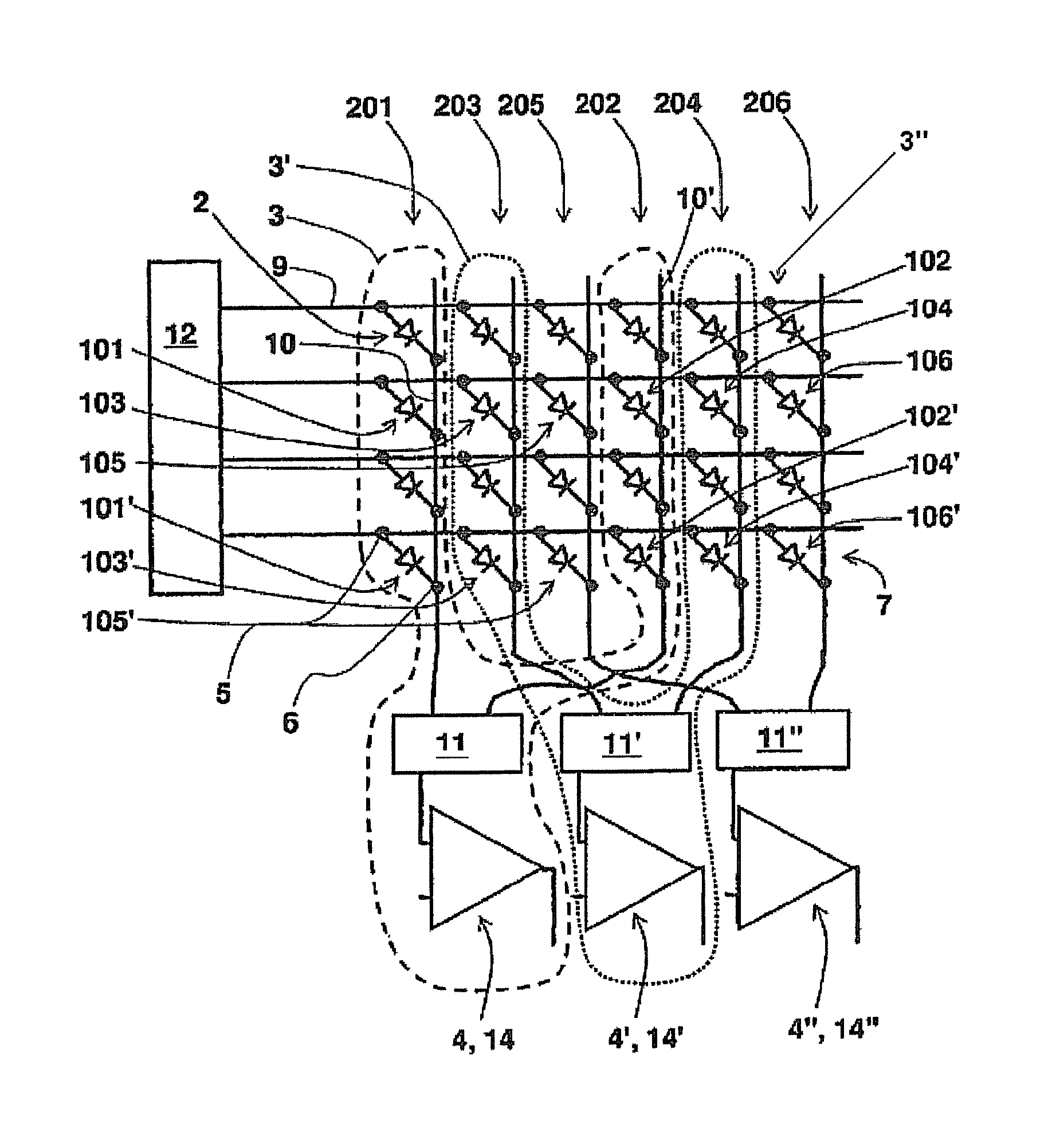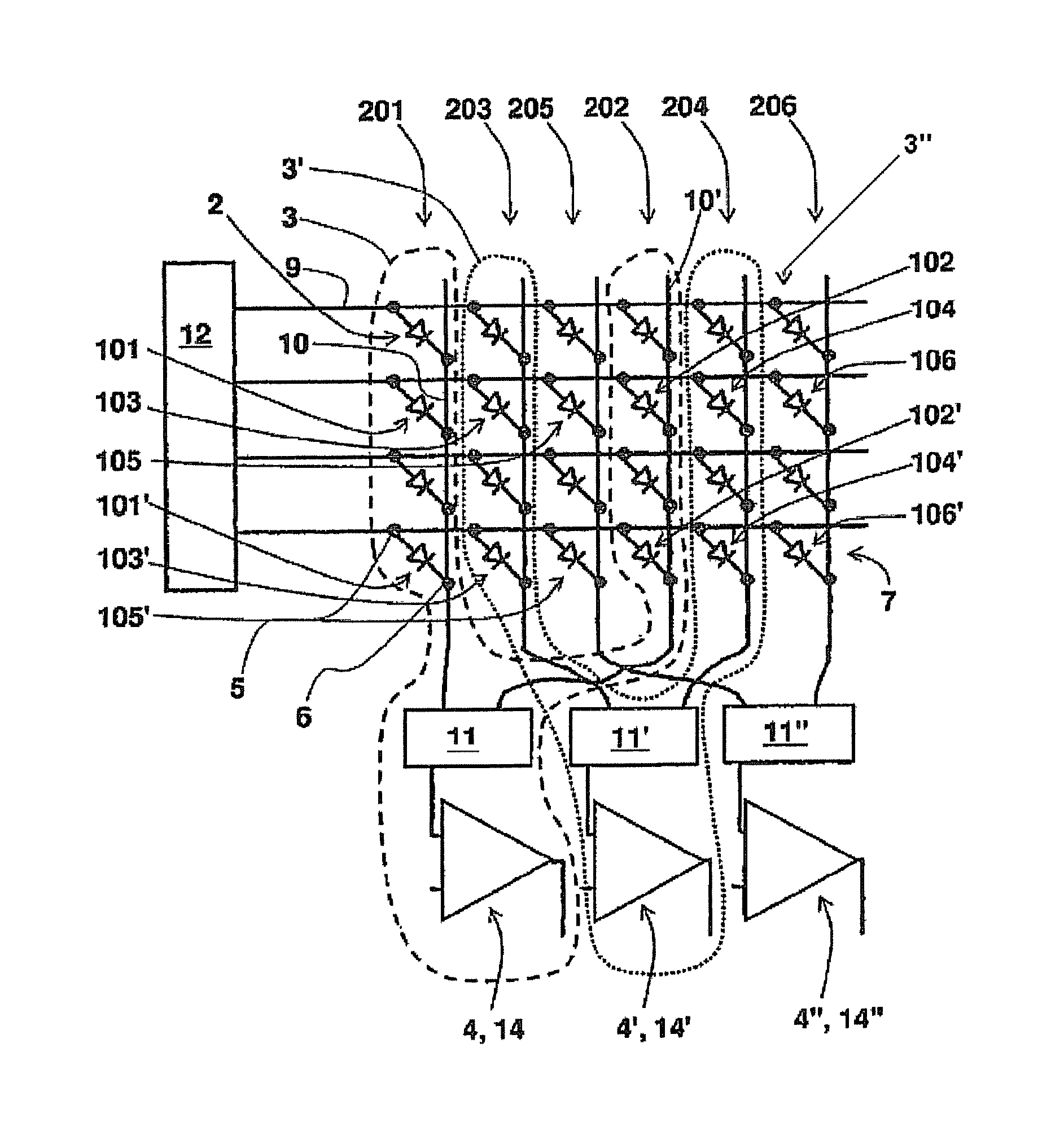Sensor system and method for operating a sensor system
a sensor system and sensor technology, applied in the field of sensor systems, can solve the problems of time delay in the evaluation of a plurality of sensor elements, and achieve the effects of simple and cost-effective implementation, increased and marked increase in the readout speed of the sensor system
- Summary
- Abstract
- Description
- Claims
- Application Information
AI Technical Summary
Benefits of technology
Problems solved by technology
Method used
Image
Examples
Embodiment Construction
[0017]As shown in FIG. 1, a circuit configuration according to an exemplary embodiment of the present invention has four rows 7 of circuit elements 2, particularly diodes, each having first and second terminals 5, 6. One of rows 7 includes a first and a second sensor element 101, 102, which together are assigned to a first sensor-element block 3, a third and fourth sensor element 103, 104, which together are assigned to a second sensor-element block 3′, and a fifth and sixth sensor element 105, 106, which are assigned to a third sensor-element block 3″. Third and fifth sensor elements 103, 105 are situated between first and second sensor elements 101, 102, while second sensor element 102 is situated between fifth and fourth sensor elements 105, 104. Thus, the sensor-element blocks are interlaced in such a way that, disposed between at least two sensor elements of one sensor-element block is always at least one sensor element of at least one other sensor-element block.
[0018]Furthermo...
PUM
 Login to View More
Login to View More Abstract
Description
Claims
Application Information
 Login to View More
Login to View More - R&D
- Intellectual Property
- Life Sciences
- Materials
- Tech Scout
- Unparalleled Data Quality
- Higher Quality Content
- 60% Fewer Hallucinations
Browse by: Latest US Patents, China's latest patents, Technical Efficacy Thesaurus, Application Domain, Technology Topic, Popular Technical Reports.
© 2025 PatSnap. All rights reserved.Legal|Privacy policy|Modern Slavery Act Transparency Statement|Sitemap|About US| Contact US: help@patsnap.com


